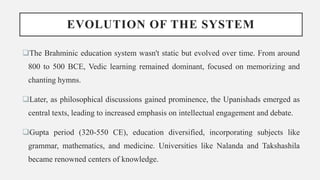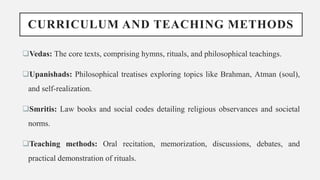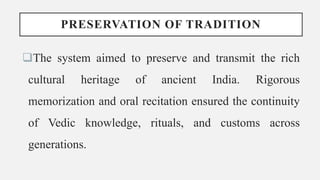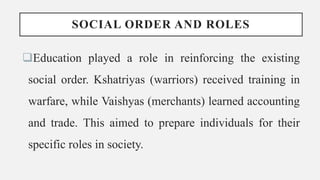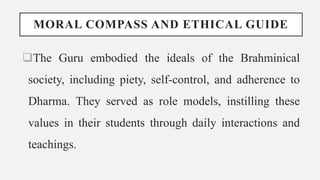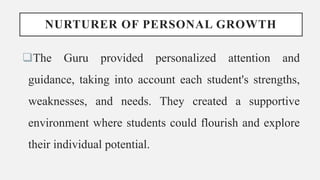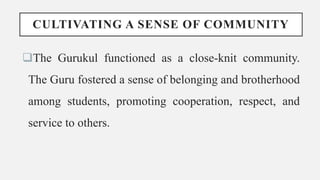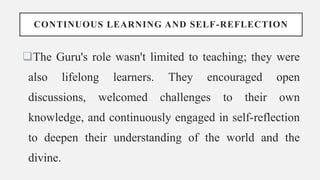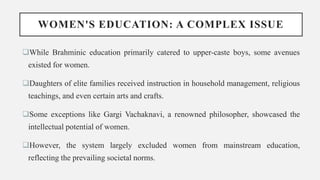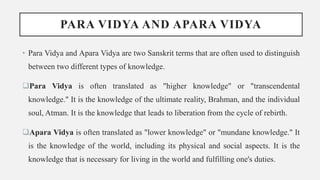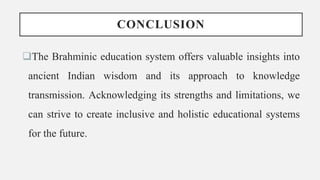The Brahminic education system in ancient India, from 800 BCE to 500 CE, focused on religious and philosophical teachings, emphasizing values like discipline and social order while evolving to include diverse subjects by the Gupta period. It aimed at cultivating intellectual, moral, and spiritual development, primarily through residential schools known as gurukuls, which fostered community living and practical skills alongside academic learning. Despite its influential legacy in shaping Indian culture, the system faced criticism for its exclusivity and rigidity, necessitating a balance with modern educational approaches.


